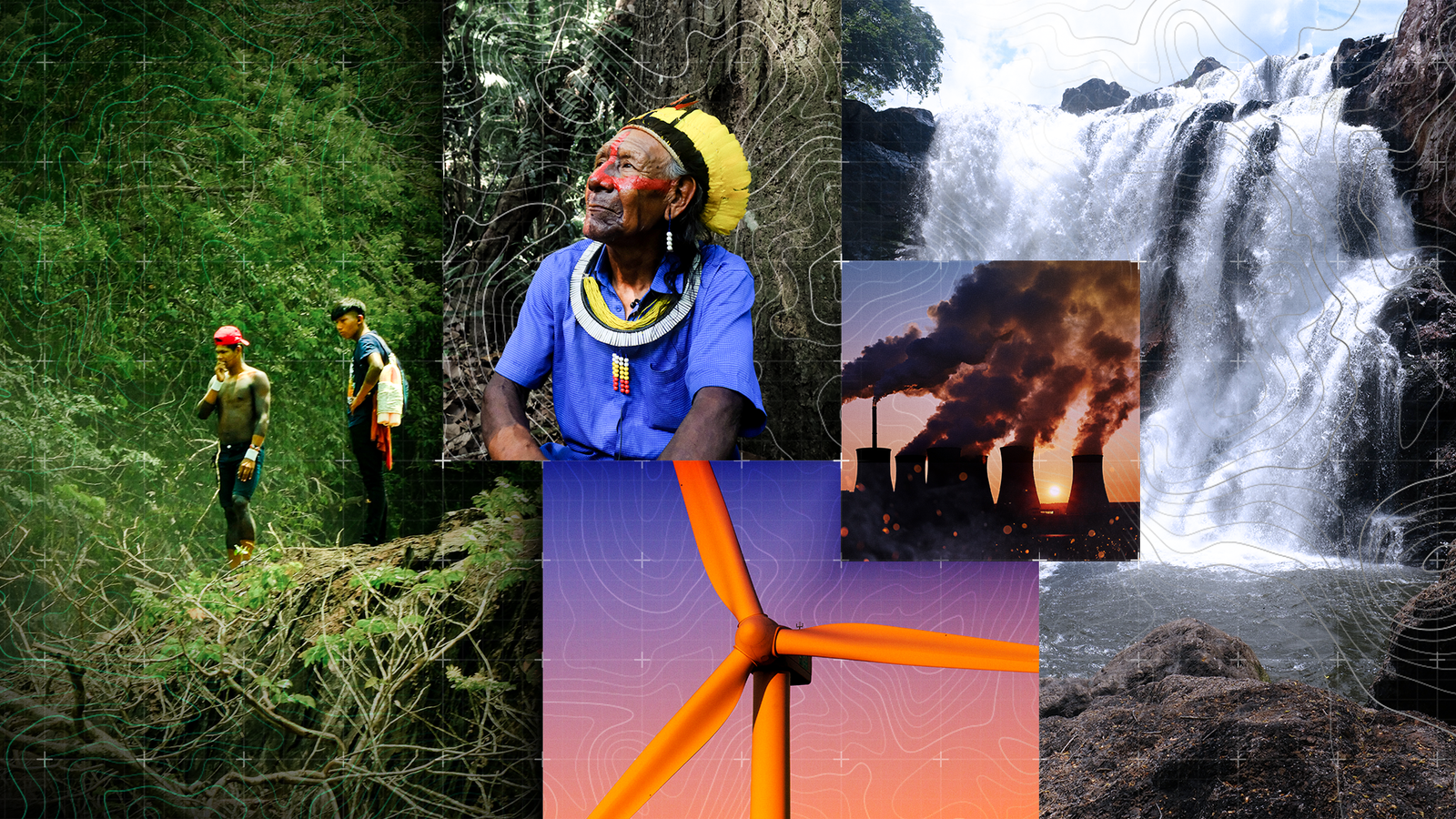By Tom Clarke, science and technology editor
Out of the window is Brazil’s cattle country.
Huge Texan-style ranches are interspersed with ugly towns that grew up around Brazil’s westward expansion of the 1970s and 80s.
It’s almost impossible to imagine that when I was a child, all this was an impenetrable rainforest.
Now only fragments remain. And a warming climate is helping take what’s left.
Along the road, we see fires. Despite vegetation appearing green and lush, they’re burning intensely.
Rainfall in this region is less than it was and dry season temperatures are around two degrees higher.
When fires start – and there were around 140,000 of them last year, nearly all man-made – they burn for longer and more destructively.
Despite significant reductions in deforestation by Brazilian President Lula da Silva’s government, fires in 2024 claimed millions of hectares, diminishing the progress.
And once the forest has burned, it typically loses its legal protection – and the cattle move in.
How can rainforests – one of the most important land-based stores of planet-warming carbon – stand up to pressure from climate and people?
Perhaps by having people in them, like the Kayapo.
They are one of Brazil’s 300-odd indigenous groups and have been one of the most successful in protecting their ancestral territory.
No mean feat considering that the territory is the same size as Portugal and there are little more than 9,000 Kayapo.
In the past, they killed invaders and violently resisted early efforts by the Brazilian government to claim their land.
The village we arrive in is called Kubenkrankehn. It translates, ironically for me, as “bald white man” – an early missionary who came to convert the Kayapo here centuries ago.
He didn’t last long.
The greeting we receive is the opposite, with singing and dancing by villagers wearing feathered headdresses and hand-sewn beads – a display of tradition and unity that’s been attributed to their success.
But also, one for our cameras.
The Kayapos’ fight now is for recognition and financial support to protect their land as ranches, roads and illegal gold mines continue to eat away at the forest bordering their territory.
